Anogeissus Pendula is a small tree or shrub that is found in abundance in the Aravali hills around Jaipur. It is a hardy tree that can survive even in the extreme conditions which explain its presence across Aravali hills in Rajasthan. The common names of the Anogeissus Pendula tree are Dhok, Dhauk, Kardhai, Dhonk, Dhau, and Dhoy in Hindi. It is commonly called Dhok tree in North India. It is also called by the name of Button Tree.
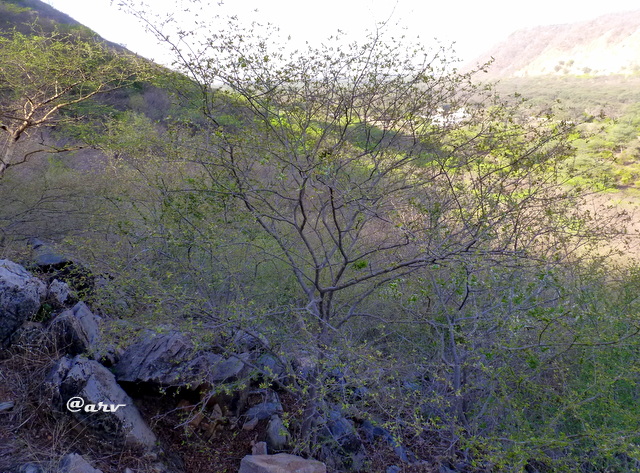
Salai tree also grows in Aravali hills range and is also a hardy tree. You can read complete post on Salai Tree or Boswellia Serrata tree – Salai Guggul Tree
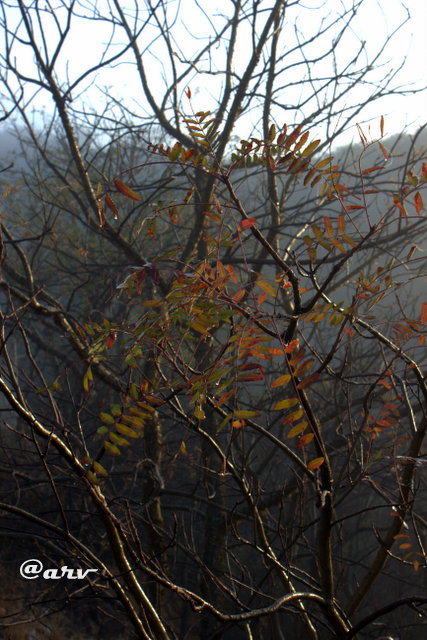
Anogeissus Pendula Uses
The tree is significant as it provides timber; it is one of the hardest wood available in this geographical region. Its leaves are used as fodder. The unique feature of this tree is that it can grow on the rocky surface with ease which means it is one of its kind of trees. Being hardy, it can survive in the toughest conditions.
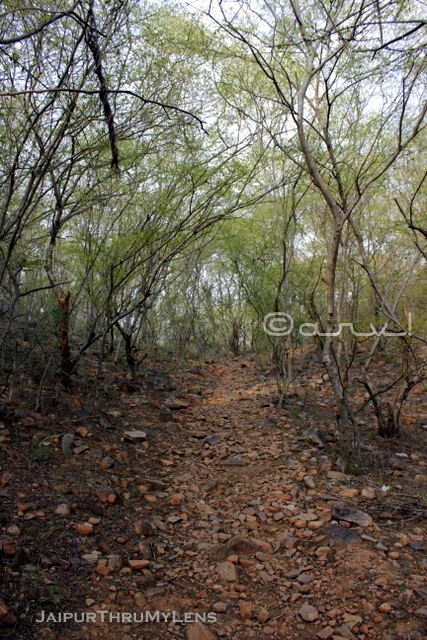
While traditional medicine like Ayurveda recognizes many of its medicinal properties, modern medicine hasn’t utilized it completely. We are yet to do extensive studies on this tree. The science has not completely harnassed its potential as far as Dhok tree is concerned. The tribal and rural folks have been using Anogeissus Pendula for many medicinal uses for ailments like dysentery or for its anti-oxidant properties.
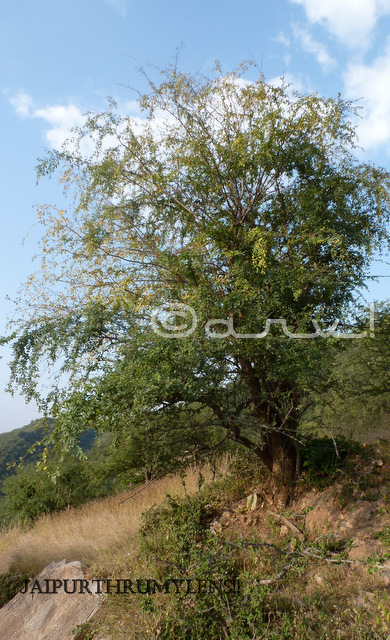
This tree is rated as one of the top hardwood around. And for this reason, Dhok tree is used as wooden handle in tools like spade, axe, hammer and many other agricultural implements & tools. Post winters, the tree sheds the leaves. The leaves are an excellent bio-mass. The tree can be used to regenerate the degraded land.
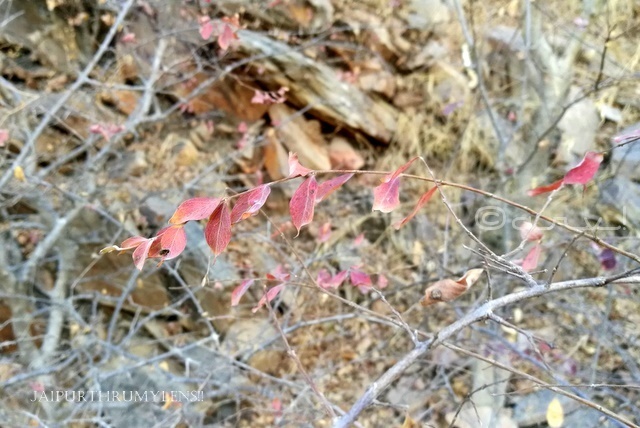
It is also found in parts of Madhya Pradesh, Delhi, and Haryana. Its bark is grey-white in color. While hiking across Aravali, I noticed that this tree is being cut by the locals as a source of fuel. Read Stop Cutting trees
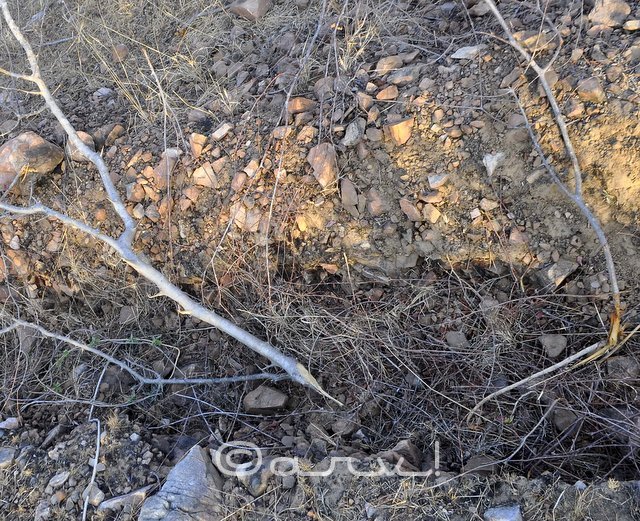
I’m not sure if the forest department is doing further plantation of this tree species in hills. Instead of planting invasive trees like Israeli Babool, there is a need to plant more of local tree species like Dhok tree that adapt very well to the harsh climatic conditions of Rajasthan, especially in Aravali belt. The ill-effects of Israeli Babool and Eucalyptus have long been established.

Why is Anogeissus Pendula Or Dhok Trees the most common tree in Aravali Hill range?
The reason Anogeissus Pendula Or Dhok Tree thrives in Aravali hills is it can survive on a rocky surface with little soil and water. This is one of the few trees that can adapt very well to the steep slopes common in Aravali Hills. It typically grows in clusters and hence finding a solitary Dhok tree is less likely. Over here are few pictures of the Dhok tree from the Aravali hills. More trees can be easily spotted on the slopes than at the top of the hills.
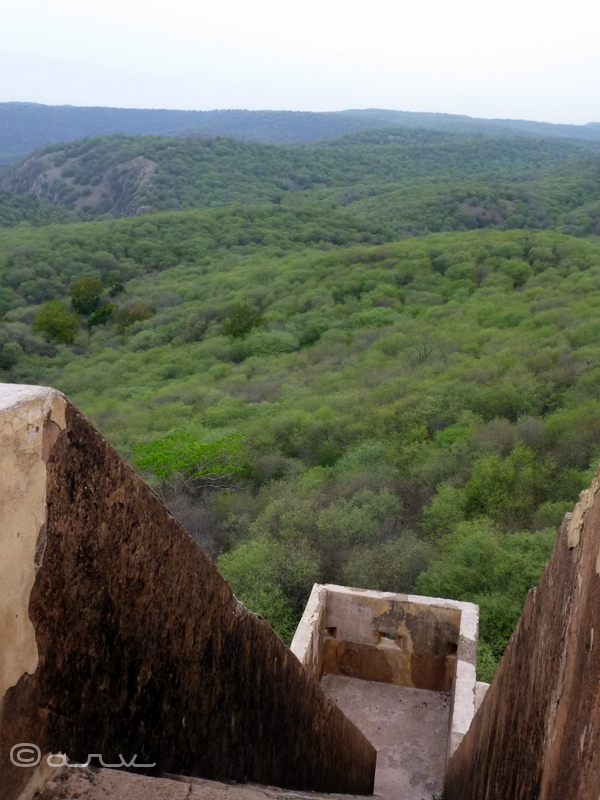
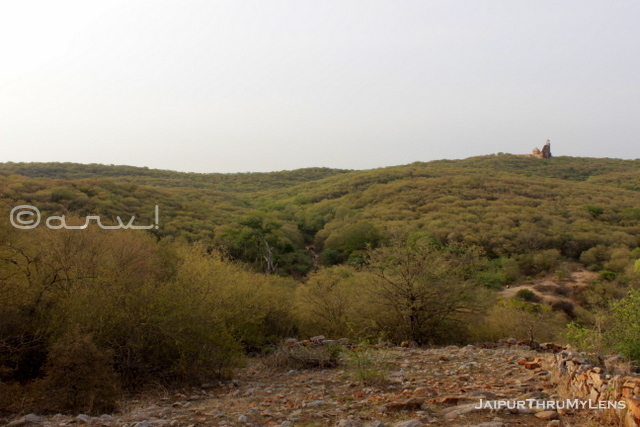
Anogeissus Pendula Roots
A mention also needs to be made about the roots of Dhok trees. It has the ability to bind itself well on the mountainous surface without getting extremely deep for strength. Moreover, the roots possess a subterranean system that allows the tree to spread well over an extensive area. Here is a picture of a Dhok tree with growth at the base of the trunk that doesn’t look like a offshoot of a stem; this is unusual for a tree in this terrain.
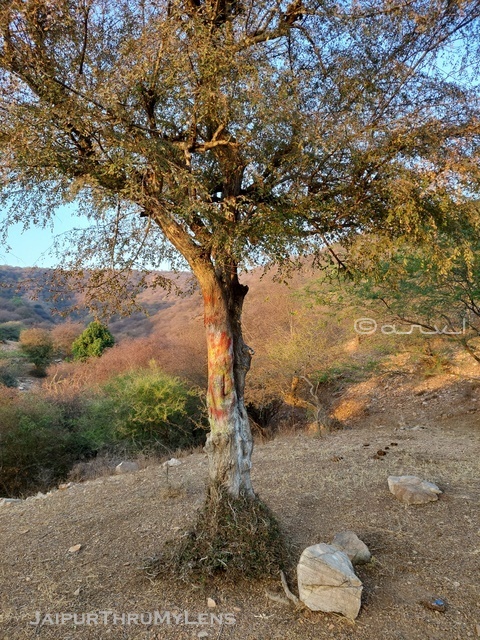
Here is a close-up of the base of the trunk.

Anogeissus Pendula Leaves
If you have not seen the picture of Anogeissus Pendula tree’s leaf, here it is. The leaves change color during winters.
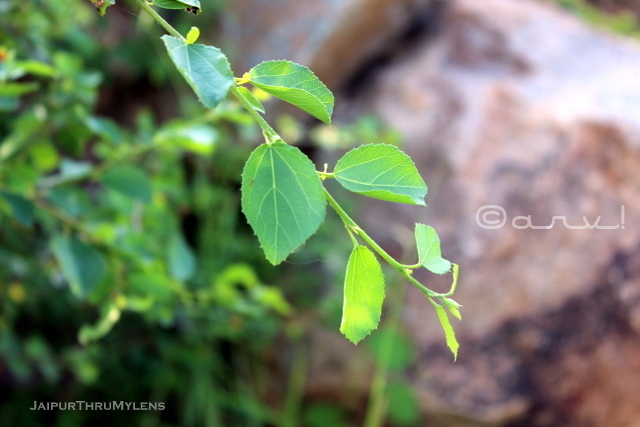
From green in monsoon, it turns into crimson during the winters. Finally, it sheds its leaves to help it survive during the dry spell of summers. A typical feature of the monsoon forest system.

Anogeissus Pendula Fruit
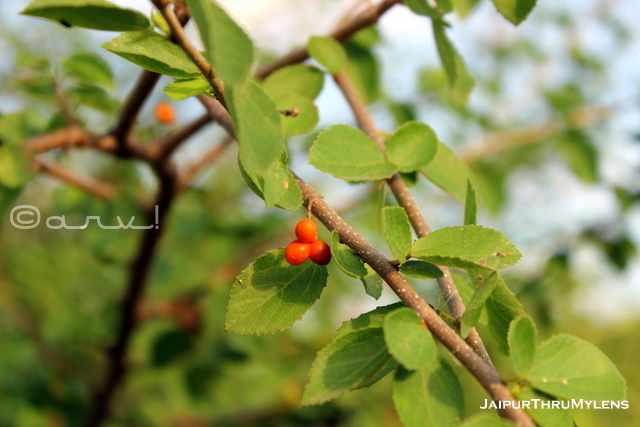
Where to find a Anogeissus Pendula Tree?
- Jhalana hills famous for the Jhalana leopard safari in Jaipur is dotted with a good number of Aanogeissus Pendula trees.
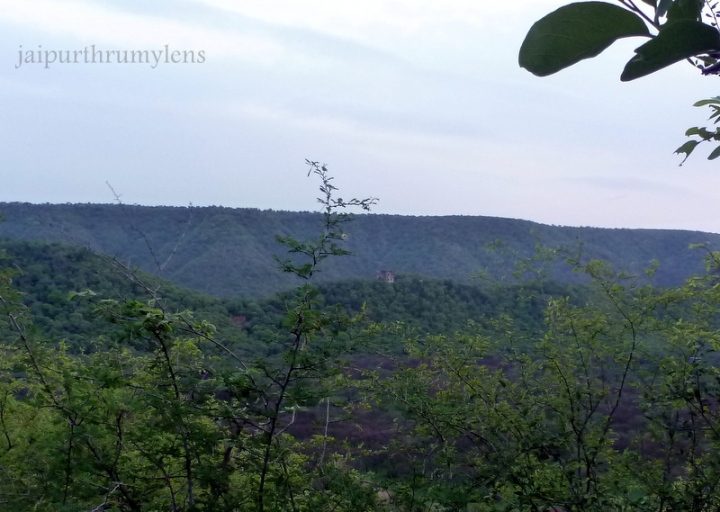
- Ranthambore National Wildlife Park in Rajasthan also has a large number of Dhok trees.
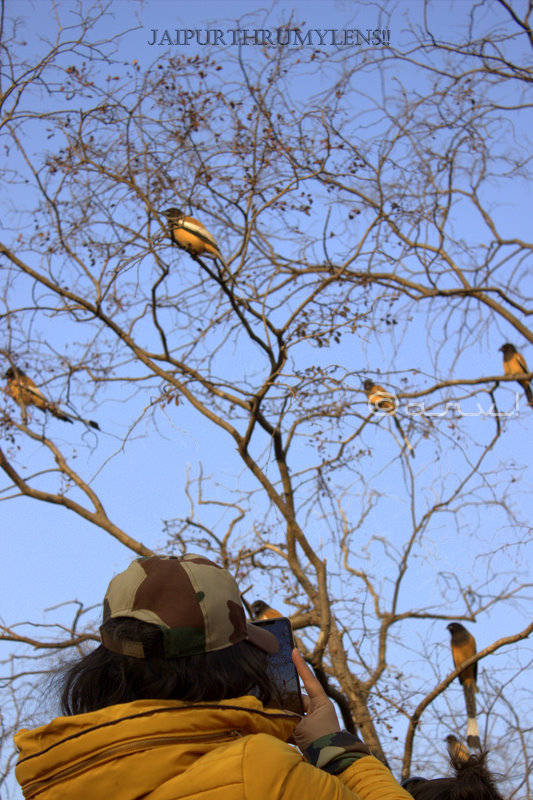
- Sariska Forest Reserve Dhok tree constitute close to 80-90% of its forest cover.
- There are number of places one can find Dhok in and around Delhi NCR especially in the Ridge and Mangarbani.
- Nahargarh Forests or Nahargarh Wildlife Reserve near Jaipur. The best bet would be Nahargarh Biological & Zoological Park.
- Kishan Bagh in Jaipur has a special Dhok area where one can observe it closely.
-
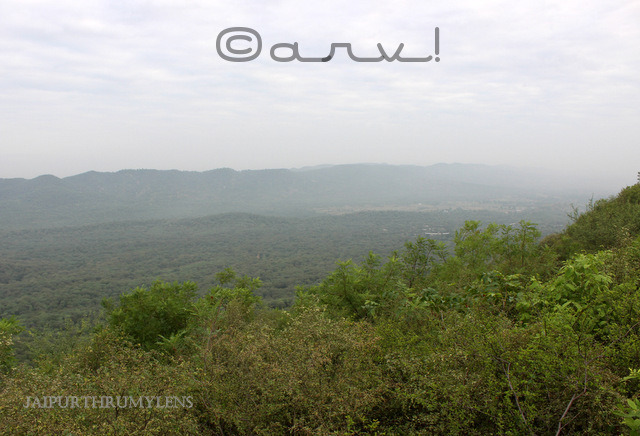
Nahargarh Biological and Zoological Park area as seen from a distance
Here is a beautiful picture of Dhok tree with Rufous Treepies in Ranthambore.
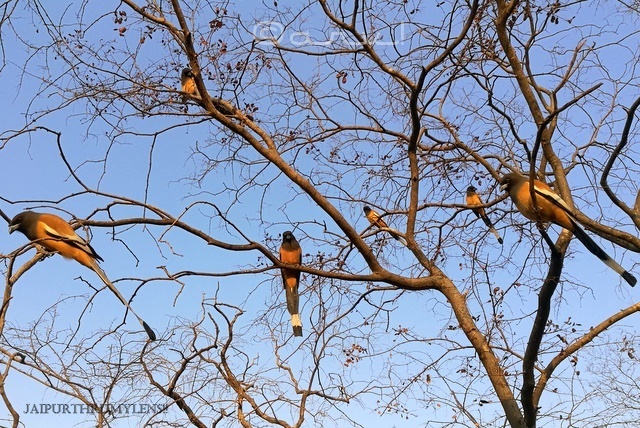
I keep sharing my hiking trips in Jaipur where I get to see this tree in abundance. Check out this beautiful forest lined with many Anogeissus Pendula trees in Hike along Dhok tree trail
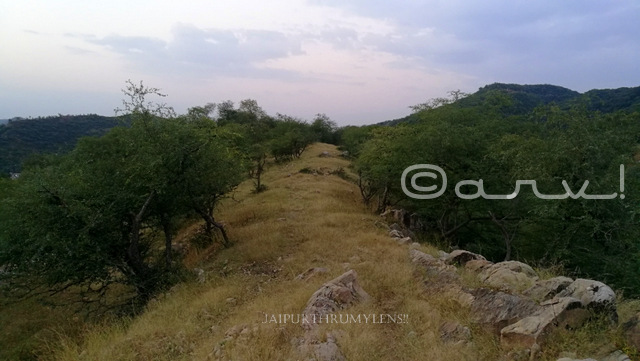
I hope that we all do something to ensure its growth & survival in the wilderness.
Check out other stories in the Trees of Jaipur.

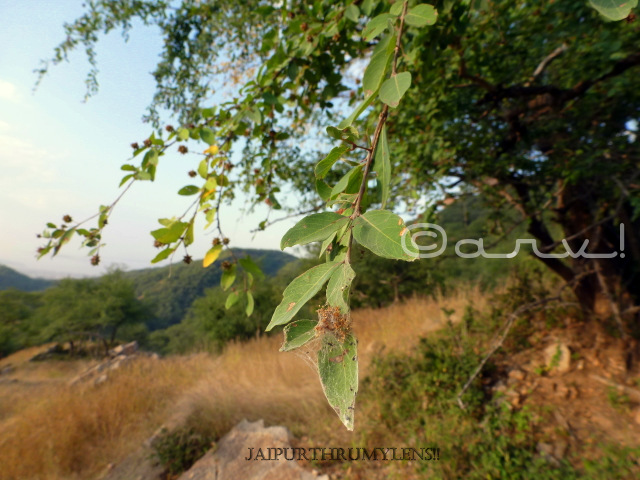
Nice one bhai. I saw these trees on Gangotri,Yamunotri trial of chota char dham in Deeg, Bharatpur district. The trees were so fascinating to watch.They were in huge clusters. >95% of the trees were this species on the hills.
LikeLiked by 1 person
Good to hear about this information.
LikeLike